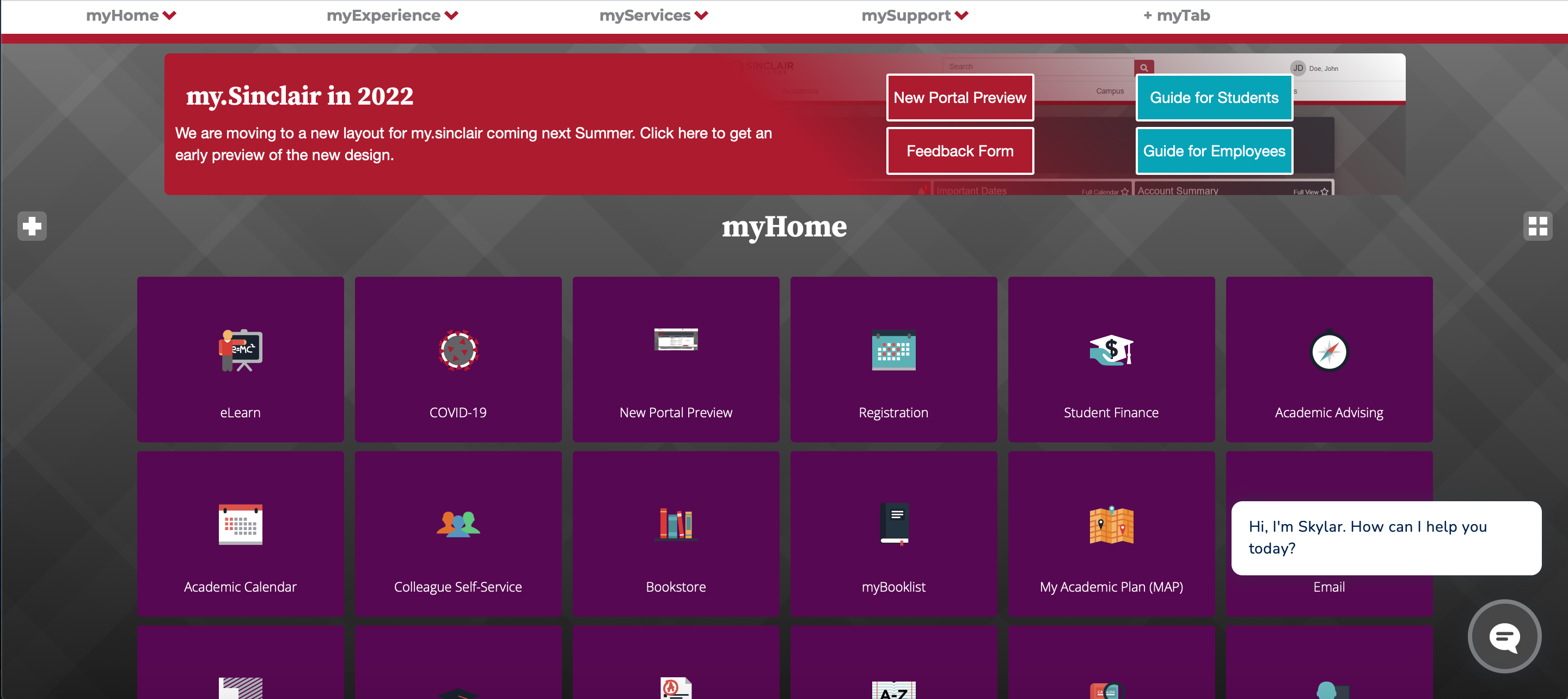In the week between spring and summer semester, the my.sinclair.edu portal will receive a major update. Visitors to the portal can already preview the changes and leave feedback.
Important, time-sensitive lists of upcoming assignments, notifications, and the registration calendar dates are front and center in the new portal design. Sinclair e-mail, grades, student finance, and other important links and information are easily accessible through a carousel on the portal’s main page. News and events are also available and the portal’s dropdown menus have been simplified significantly.
Sinclair’s Information Technology (IT) department, led by Chief Information Officer Scott McCollum, planned and is implementing these changes to the portal. IT wants to make it easier for people using my.sinclair to get the information they need out of the website. To do this, the department has made use of artificial intelligence tools and analytics. Last year, IT integrated the Skylar chatbot into the portal and has since deployed it on the main Sinclair website as well.
IT partnered with Ohio company Afidence to develop the new portal. Afidence helped with surveying and interviewing users about the portal and identified new needs for the redesign to focus on. Traffic analysis was done to figure out what pages and information were most frequently requested and this guided the process. Now that frequently accessed information will be spotlighted on the portal’s front page, users will have to click through less pages, menus and log-ins to find what they need.
The portal redesign will come with a much-needed upgrade to the infrastructure behind the portal. Since my.sinclair’s launch in 2018, the software framework that it is based on, uPortal, received a significant update that required IT to redevelop and redeploy the portal. IT took this opportunity to investigate how people used the portal and what they wanted from this upgrade.
The new portal will focus on personalizing the information it displays. While the current portal is static and displays the same information to everyone, the new portal will learn from the people using it and display information based on the pages they frequently access, news articles they have read and, in the case of a student user, their major.
The portal’s search capabilities will be updated to make it easier to find information. As menus grow and grow, people’s ability to find things using them is reduced. Just as the web in general transitioned from using directories to using search engines, my.sinclair will move from a reliance on dropdown menus and portal tiles to a reliance on robust search and personalization. The power behind these changes is artificial intelligence, similar to what one might encounter when using Google or Windows.
IT centered this redesign around user feedback. IT has the duty of managing all the technical infrastructure at Sinclair and makes a conscious effort to take direction from its users.
“We don’t implement technology for the sake of technology, the people who make the decisions on what products we implement are the users,” says McCollum.
Another big infrastructure change, eLearn’s 2015 move from using the learning management system ANGEL to Desire2Learn, was initiated by and tailored to the needs of the instructional department. The needs of staff, students, and faculty always guide IT as it drafts its yearly plans and implements its goals.
Preview the new portal and be sure to leave feedback. The new portal will launch between the end of spring semester, May 8, and the beginning of summer semester, May 16.
Carlos Jillson
Reporter

